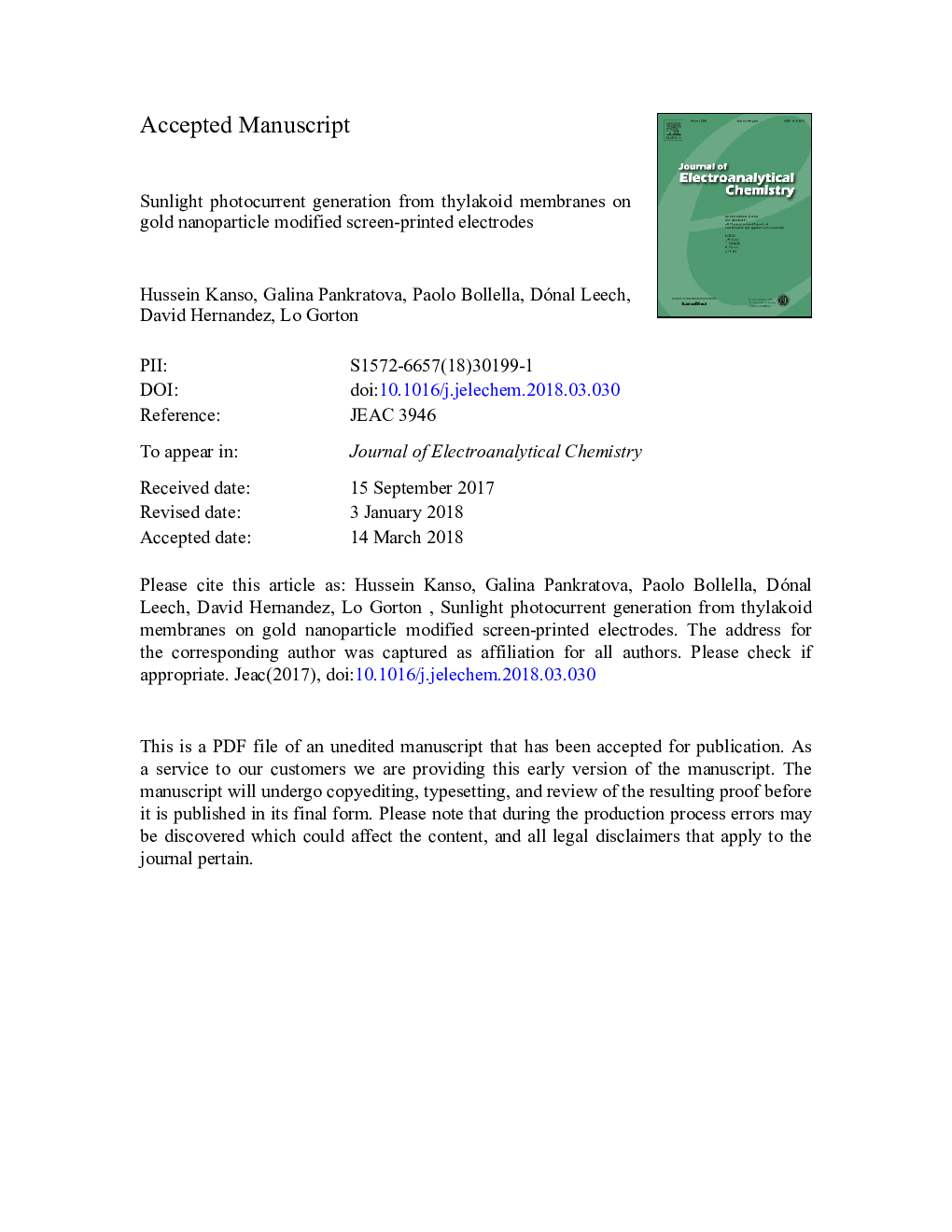| Article ID | Journal | Published Year | Pages | File Type |
|---|---|---|---|---|
| 6661951 | Journal of Electroanalytical Chemistry | 2018 | 16 Pages |
Abstract
In this work we report on the increase in photocurrent obtained by using thylakoid membranes “wired” with an osmium redox polymer (OsRP) immobilized onto screen-printed carbon and gold electrodes (SPCEs and SPAuEs), modified with gold microparticles (AuMPs) and gold nanoparticles (AuNPs). Both AuMPs and AuNPs were electrodeposited by using the same electrodeposition method in order to study the influence of different electrode surface morphologies, namely AuMPs and AuNPs, on the photocurrent generated when illuminated ÎÎÎ with light with an intensity equivalent to that of sunlight (400â¯Wâ¯mâ2). AuMPs/SPCEs showed the highest current density (62.5â¯Î¼Aâ¯cmâ2) upon illumination probably due to a higher capacitive current directly related to the enhanced electroactive area (AEA) and roughness factor (Ï). Finally, the so modified electrodes AuMPs/SPCE and AuNPs/SPAuE were characterized by using scanning electron microscopy (SEM) showing a different surface morphology, resulting in a higher surface roughness for AuMPs/SPCE compared to AuNPs/SPAuE therefore an intimate interaction between the large thylakoid membrane and the AuNPs. A high photocurrent density of 62.5â¯Î¼Aâ¯cmâ2 was generated at a light intensity of 400â¯Wâ¯mâ2.
Related Topics
Physical Sciences and Engineering
Chemical Engineering
Chemical Engineering (General)
Authors
Hussein Kanso, Galina Pankratova, Paolo Bollella, Dónal Leech, David Hernandez, Lo Gorton,
